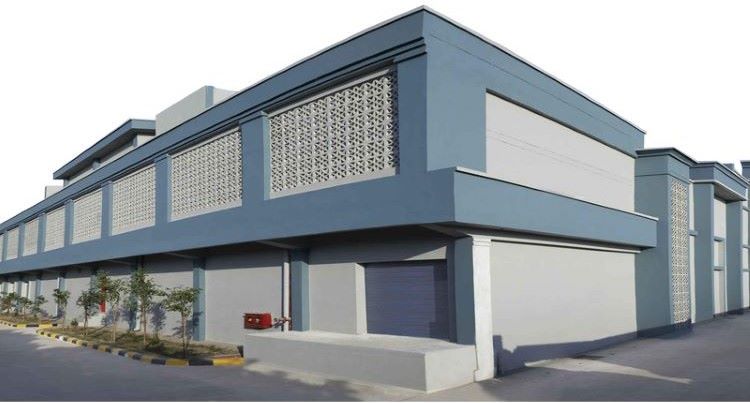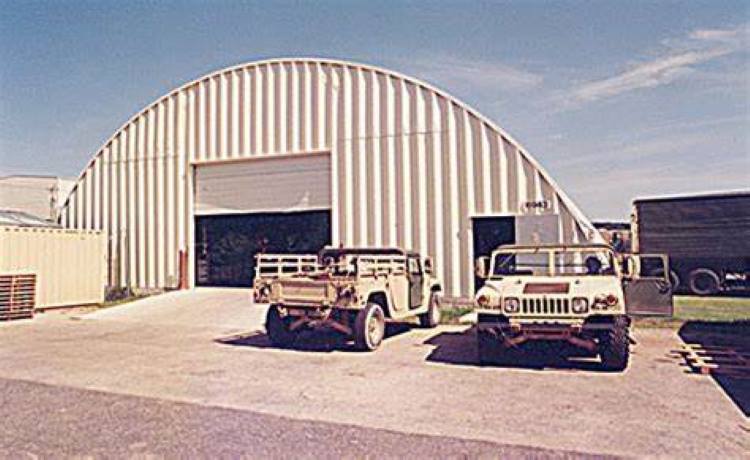Metal building siding-A guide to siding options for steel frame buildings
No Pics.

Metal building siding
A guide to siding options for steel frame buildings
Index On This Page
1.Metal Siding Panels
2.Insulated Metal Panels
3.Fiber-Cement Board
4.Brick Veneer
5.Stone Veneer
6.Wood Siding
7.Stucco Panels
8.Glass
9.Mixed Facades
10.Wainscot
Your choice of siding will be affected by several factors such as cost, what kind of look you prefer, wind-loading, provisions of local codes, and the local climate.
For many commercial, industrial, agricultural, and storage applications, PBR metal panels (see below for more details) included in the metal building package will provide the lowest cost and will be adequate for most users needs. The main reason for choosing an alternate cladding option would be a desire for an architectural appearance or to compliment existing structures.
Metal Siding Panels
Similar to metal roof panels, metal siding panels are available in both through fastener and concealed fastener designs.
Through fastened systems are by far the most popular choice for the majority of applications due to their fast, simple installation and low price point.
Concealed fastening wall systems are primarily used in architectural applications where a certain design aesthetic is required. Applications include modern warehousing facilities, office complexes, hospitals, and government buildings.
Through-Fastener Metal Siding (screw down)
PBR (Purlin Bearing Rib) metal panels are the most popular type of siding included in the building kit packages sold by our suppliers. Some version of this is what you’ll see on the majority of today's metal buildings. Most of our suppliers provide PBR panels with their buildings for both the siding and roof panels, in either 26 or 24-gauge thickness.
PBR panels are a versatile product that can be used for various agricultural, commercial, and even residential applications. They are customizable to suit any need and come in different coatings and colors to suit any preference.
Sheet steel is roll-formed into the PBR profile (see image below), boosting the material's strength and resilience to impacts, wind, and snow loads. PBR panels differ from others in having an additional lip or purlin-bearing leg, providing a stronger connection for metal-to-metal contact; this adds to the rigidity of the panels and increases the weatherproofing characteristics.
When combined with insulation and, sometimes, interior liner panels, this single-leaf siding becomes what is known as field-assembled panels. The panel suppliers call their products different names, such as R-panels, A-panels, or PBR panels.
The panels are attached to their supports (wall girts) with screws or similar fasteners. The fastener heads are exposed to weather, so they are provided with corrosion-resistant finishes.
The type and gauge of the panels depend on the spacing of wall girts and the design wind loads on the building. A typical rib height is 1-¼”. For very high wind loads and uncommonly large girt spacing, heavy-gauge 4” extra-deep panels can be used.
Typically, the rib orientation is vertical, allowing easy water channeling. When a distinctive look is desired, sometimes the architects select the extra-deep panels running horizontally. This solution requires a custom structural design of the supports.
Advantages:
- Inexpensive compared to other options.
- Fire and heat resistant
- Durable and easy to install.
- Moisture resistant (as long as it is well sealed and properly maintained to prevent rust).
- Professionally installed on appropriate-sized girt supports, metal siding can resist even hurricane-force winds.
Disadvantages:
- Possibility of corrosion of the exposed fasteners.
- Siding alone provides little thermal value and typically must be supplemented by field-installed insulation.
- The somewhat industrial look is best suited to warehouses, airplane hangars, and similar buildings. You might want a more attractive finish for a retail space, community facility, or home.
Applications:
- Both personal and commercial garages.
- Farm storage buildings and barns.
- Hobby shops and commercial auto shops.
- Through Fastener Metal Siding (PBR Panel)
- Through Fastener Metal Siding (PBR Panel)
- Credit: Star Building Systems

Concealed Fastener Metal Siding
Concealed fastener panels have hidden fasteners located inside interlocking panel joints. This system provides for a smooth, clean design aesthetic and protects the fasteners from the elements. The way these panels are installed makes them more stable and weather-tight.
Advantages:
- A polished architectural appearance.
- Improved weather seal.
- Reduced maintenance.
- Long lifespan.
Disadvantages:
- Increased cost (of the paneling system).
- Increased installation time.
- Additional trim and flashing are required.
Applications:
It is also worth noting that concealed fastener panels can also be used on the interior of the building to again provide an architectural design appearance.

Concealed Fastener Metal Siding
Credit: Star Building Systems
Insulated Metal Panels
Insulated metal panels (IMPs) are integrated units consisting of a foam (usually either PIR or PUR foam) core between exterior and interior metal skins. Insulated siding panels are common on commercial metal structures because of their thermal qualities, design flexibility, rapid installation process, and attractive appearance.
They are available in various colors, sizes, finishes, and profiles for a modern look for offices, banks, warehouses, industrial facilities, hospitality, and healthcare facilities. The most current advancements in composite siding panel production allow them to function with dependability and durability while allowing for fast installation.
Advantages:
- Outstanding insulation properties.
- Panels are lightweight and easy (one-step installation saves on field assembly).
- Ideally suited to cold storage facilities due to high R-values.
Disadvantages:
- Relatively high cost.
- Special equipment is needed for installation.
Applications:
- Modern warehouses.
- Medical facilities.
- Office complexes.

Credit: IMARK Architectural Metals
Non-Metal Wall Options
Many possibilities are listed below if you want wall options other than metal panels.
Please note that none of those are included in the metal-building package, so you would have to retain the services of a competent design professional and an experienced contractor to design and install those types of walls. Please also note that using any of those would require supplemental steel framing added to your building package.
Synthetic stucco and brick veneer require a backup system of cold-formed steel framing (steel studs, track, and bracing) designed to stringent stiffness criteria. In addition, typical metal building framing might not be stiff enough to provide lateral support for brittle wall materials. For example, a metal building with a brick veneer would have to be heavier and more rigid than a building clad with metal panels.
Fiber-Cement Board (Hardie Board)
These can provide a different, softer, building appearance but are more common in residential construction. The main disadvantage of using fiber-cement boards for metal buildings is that the boards require closely spaced supports for installation. In wood-frame residential construction, the wall studs are spaced 16” on centers, while the typical spacing of metal girts might be 5-7 feet. If girts are used, a grid of steel subgirts would be needed to support the boards.
Brick Veneer
Brick gives a classic, attractive look, appreciated by many.
Advantages:
- Moisture resistant.
- Great insulation value.
- Fire resistant.
- Good sound dampening, especially if the space between the brink veneer and the metal wall is filled with insulation.
Disadvantages:
- Although it looks like it would give structural support, being just a veneer, it does not. As noted above, a typical metal building might not be rigid enough to incorporate brick veneer, so a more costly custom design would be needed.
Stone Veneer
Stone veneer can be used when desired for appearance. The veneer could be made of genuine thin stones or of synthetic stone look-alike material. The latter is typically made of specialty mortar or concrete materials cast in forms made from real rock. Faux stone has an amazingly authentic appearance and feel. It can be used as an accent with other finishes or for complete coverage.
The same advantages and disadvantages noted above for brick veneer apply to stone veneer as well.
Wood Siding
For some types of buildings, you can’t beat wood. e.g., a sturdy metal building with wood siding for stables.
Advantages:
- Strong and attractive.
- Durable if adequately maintained.
Disadvantages:
- Relatively time-consuming and expensive for maintenance. To both keep it looking good and prevent rot, the finish must be redone every few years.
- As noted above, supplementary steel framing is required, which will increase the build cost.
Exterior Insulation Finish Systems (EIFS)
This popular wall system is also called synthetic stucco.
Advantages:
- Attractive look, good insulation, and a relatively economical way to get that attractive finish.
Disadvantages:
- Requires drainage cavity to remove rainwater that might penetrate the outer finish.
Glass
Not very common, but appropriate for some types of buildings, such as car showrooms or some modern homes.
Mixed Facades
You can make an individualized and attractive finish by mixing the options above. For example, you might have a faux-stone for the lower part of your wall with stucco siding above.
Wainscot
A wainscot adds a contrasting color or texture to the bottom of an exterior wall. Can be metal, stone, or brick. Usually, it will be just a few feet at the bottom of the wall.
Advantages:
- Provides an attractive accent.
- Provides extra protection to the full wall siding and is then easy and inexpensive to replace if damage occurs from mowing or outside work.
- For light-colored buildings, a darker wainscot color will help hide dirt marks.
Disadvantages:
- An additional cost.
See our metal building colors page for wainscot color options.
Common Questions
What gauge of siding is provided with the metal building kit package?
Answer:Our suppliers include either 26 gauge or 24 gauge metal siding as standard with the metal building kit package.
What is the heaviest gauge steel siding used on steel building projects?
Answer:However, it's worth mentioning that the thickness of the steel siding is not the only factor determining its strength and durability. The type of coating and the quality of the paint used on the siding also play a significant role in the siding's overall strength and durability. Some steel building projects use thicker material but it's not as common, and it may add more weight to the building and cost more.
Can we source our own siding?
Answer:Absolutely, you are under no obligation to purchase siding from your chosen metal building supplier.
Further Reading
|
Why choose us?
Since 2004, over 200K buyers have saved an average of 28% on their project with our multiple quote service. Proudly serving customers in the world for over 20 years. |
Compare & save!
Tell us about your project We match you with vetted suppliers You receive four competing quotes Select the most suitable supplier Start your project |
Would you like to see more information and images of ZHM’s Metal Steel Structure Buildings ? Visit our Photo Gallery.
HOW CAN WE HELP YOU?
ZHM’s world-class team — together with our raw material suppliers and subcontractors — works to solve your most challenging design, engineering, farbrication or construction issues.
Contact ZHM by telephone at +86 135-8815-1981 (wechat and whatsapp) or send us your questions via email to info@zhmsteelworks.com












